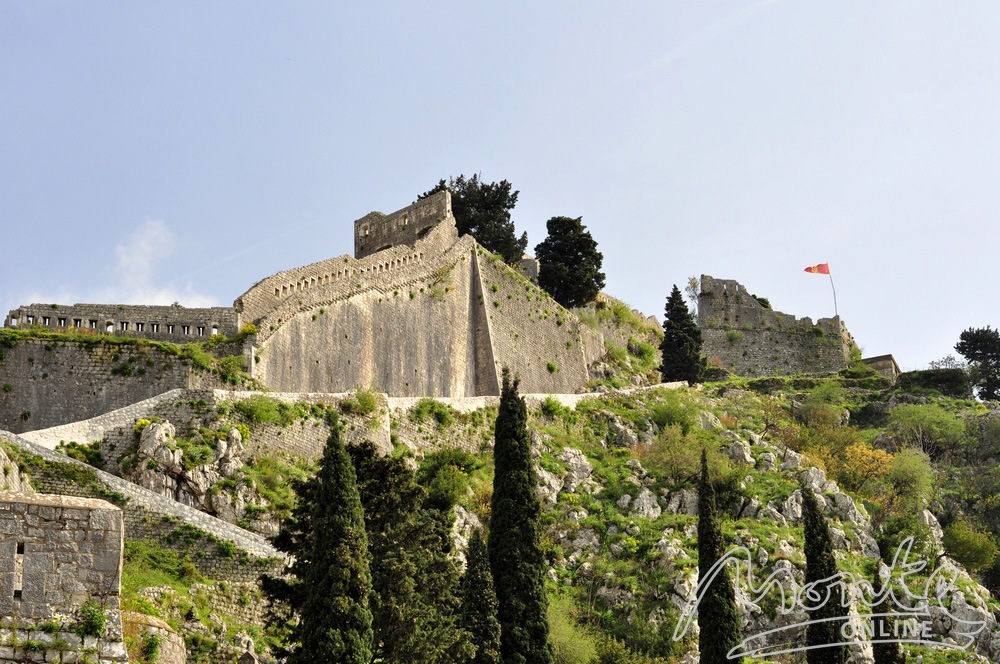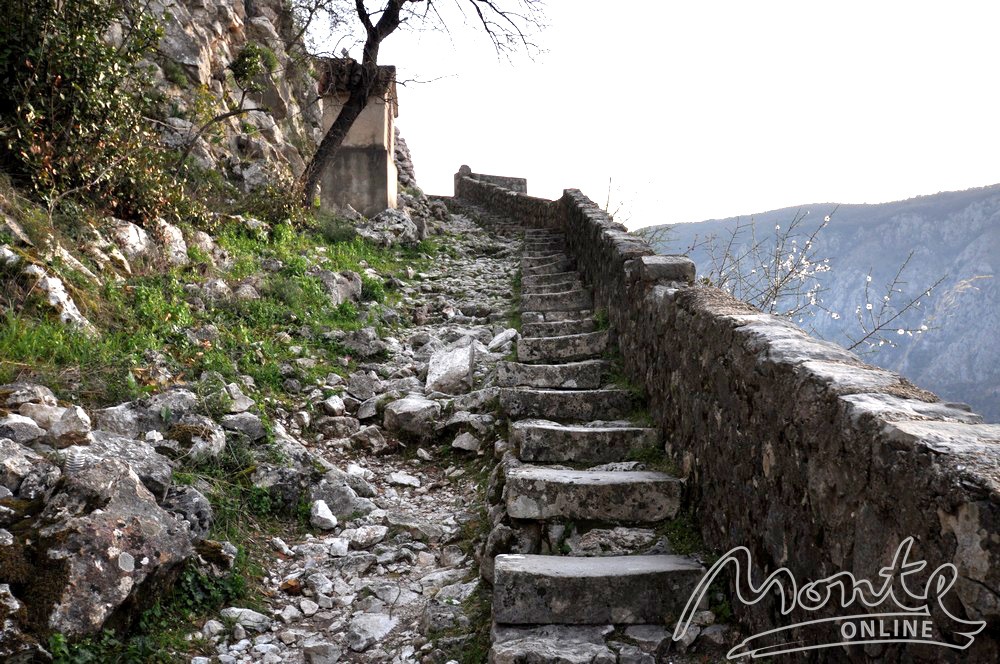Kotor, Montenegro (see on Montenegro map) is located in the southeastern part of the Bay of Kotor, at the foot of the Lovcen mountain range. The city is located mainly along the coastline and in the valley at the slopes of the hill, reaching a height of 260 meters.
The Bay of Kotor (Montenegrin Boka Kotorska, Italian Bocche di Cattaro) is one of the most protruding parts of the Adriatic Sea, constituting one of the most beautiful natural harbors in Europe. In July 2000, Boka Kotorska was included in the list of twenty-five most beautiful bays in the world (the rest of the bays from this list are located mainly in the Scandinavian countries).
“Hidden on the shores of a winding bay, squeezed by undulating fortress walls and mountains ...
It is believed that its name comes from the ancient Greek "katareo" -
rich in springs, for fresh waters coming from the mainland, flowing around its walls from two sides and mixing,
they fall into the salty ones, overflowing from his face, and the bosom of the city from time to time sucks in a little of the sea.
So the waters of Kotor are constantly changing, amusing themselves with their games: sometimes underground - above-ground, then fresh - salty "
Yasmina Mikhailovich
The Old Town of Kotor is rightfully considered one of the best preserved medieval urban centers on the Adriatic, included in the UNESCO World Cultural Heritage List. From 1420 to 1797 Kotor and its surroundings were under the control of the Republic of Venice and the Venetian influence remained dominant in the architecture of the city.
ATTRACTIONS
1. City walls - continuously built and rebuilt from the 9th to the 19th century. The walls surround the old city and rise to a rocky hill, on the slope of which Kotor is located. Their length is 4.5 kilometers, the height reaches 20 meters, and the thickness is 16 meters. At the top of the hill at an altitude of 260 meters above sea level is the fortress of St. John (Italian: bastione di San Giovanni).

Вообще, до этой крепости не так-то легко добраться – необходимо преодолеть 1350 ступенек! Не каждому удается с первого раза покорить ее. Помимо своей исторической ценности этот комплекс имеет и спортивную ценность – то и дело мимо тебя пробегают спортсмены.
2. City gate
• Sea gate (main) - XVI century. The gate, made of massive stone blocks, leads to a passage in the thickness of the wall, the right side of which is decorated with a 15th-century Gothic bas-relief depicting the Madonna with Christ, flanked by St. Tryphon and St. Bernard.
• Gurdich Gate (Southern) - separated from the road by a drawbridge over the mouth of the cave. On rainy days, fresh water rushes out of the cave and pushes the sea water away from the walls. On summer days, the river flow disappears into the cave and the sea water again rises to the gate.
• River Gate (Northern) - built to commemorate the victory of Kotor over the famous Turkish admiral Khairuddin Barbarossa in 1539. The inscription above the gate says that Barbarossa besieged the city with 70 ships and 30,000 soldiers, but could not capture it.

3. Prince's Palace - XVIII century. In the past, the official residence of the Venetian governor was located here (part of this palace is visible in the previous photo).
4. Clock tower - 1602. At the foot of the tower there is a pillory, in front of which the convicts were placed and sentences were read to them.

5. Palace of the Gregorin family - XVIII century. Today, the building houses the Maritime Museum of Montenegro.
6. Palaces of other noble families of Kotor: Bucha (beginning of the XIV century), Bizanti (XIV century), Drago (XIV-XV centuries), Pima (end of the XVII century), Beskucha (middle of the XVIII century).
7. Cathedral of St. Tryphon - 1166. Rebuilt after the earthquake of 1667, when the bell towers and part of the facade were destroyed. The interior of the cathedral is decorated with frescoes by Greek masters. On the facade of the cathedral, there is a memorial plaque installed in 1925 in honor of the millennium since the coronation of the first Croatian king Tomislav.

8. Church of St. Luke - 1195. Initially, the temple was Catholic, but in 1657, when many Orthodox took refuge in Kotor from the Turkish invasion, the Venetian administration of the city allowed them to use the church for Orthodox rites, so there are two altars here - Catholic and Orthodox.

9. Church of St. Mary on the River - 1221. The relics of St. Hosanna of Kotor are kept here, so the townspeople often call this church “Blessed Hosanna”.
10. Church of St. Clara - XVIII century. It houses a library of old handwritten books, the oldest of which dates back to the 10th century. Also in the collection there are books printed at the end of the 15th century by Andrija Paltashich, the first South Slavic book printer.
11. Church of St. Michael - XIV-XV centuries. The Lapidarium is kept in the courtyard of the church - a collection of stone carved coats of arms of the noble families of Kotor.
12. Outside the city walls, we can mention the church of St. Matthew (1670), built on the foundations of an earlier medieval church, and the church of St. Eustache (1773) in Dobrota.
HOW TO GET THERE?
Tivat Airport, one of the two international airports in Montenegro, is located 5 km from Kotor. From here regular flights are made to some major European cities (including Moscow). During the tourist season (from April to October), daily charter flights are made from Tivat to many other cities in the world. You can also get to Kotor from Podgorica Airport, where regular flights of international airlines are made all year round.
In addition, Kotor can be reached from Dubrovnik Airport (Croatia). For Russian citizens to enter through Croatia, a Croatian tourist voucher or a document replacing it (for example, a hotel reservation in Croatia) is sufficient, but in the absence of such a document, a Croatian transit visa is required. In the summer season, Croatia, as a rule, cancels the visa regime with Russia; Russian citizens do not need a visa to Croatia in 2012 from April 1.
During the tourist season, large cruise liners regularly call at the port of Kotor. There is also a yacht marina in the port.
The Vrmac tunnel connects Kotor with the Adriatic Highway, the rest of the coast and the hinterland of Montenegro. There is also an old picturesque mountain road connecting Kotor and Cetinje.










